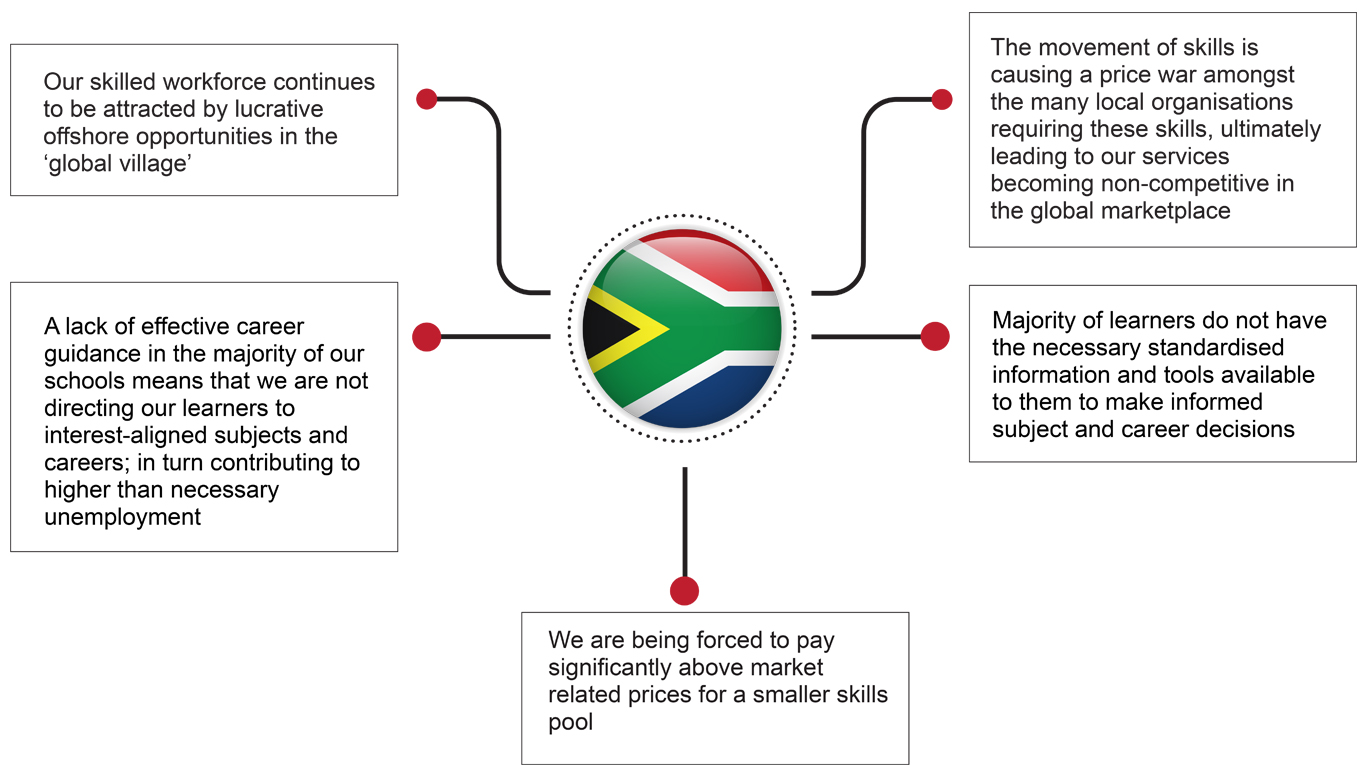Grassroots Skills Development
Critical skills can best be described as:
“Scarce and critical skills refer to an absolute or relative demand, current or future, for skilled, qualified and experienced people to fill particular roles/professions/occupations or specialisations in the labour market.” The lack of information, qualitative and quantitative career guidance programmes on a national level, severely prejudices our youth and contributes to an ever-increasing youth unemployment crisis. The most important skills development target market is our youth who suffer from the highest levels of unemployment in South Africa.
The development of critical skills can further be disseminated as:
Reactive Skills development
The development and provision of skills to those out of school either having attained matric or dropped out of school. This includes tertiary qualified persons that require skills development in other areas. This is by far the most expensive area of skills development. This sector continues to grow year on year.
Pro-active skills development
The development of skills and career path opportunities at an early stage in order to maximise opportunities for our youth so that the entry and integration into a relevant skills pool is fluid and impactful. Proactive skills development is an absolute necessity, in that, without it, the number of youth entering into unemployment (and requiring a reactive skills development intervention) will continue to grow exponentially, costing the economy funding it cannot afford. The Kommunity Career Handbook programme focuses on the pro-active skills development area.
Career Guidance as the Foundation for Skills Development
According to the United Nations statistics, there are 1.2 billion youth aged 15-24 globally as of 2015, accounting for one out of every six people (17%) worldwide. This is predicted to increase to one out of every four people, which means there would be 1.3 billion youth by 2030. This global trend has particular pertinence to Africa, because Africa has the largest concentration of young people in the world. According to the United Nations, 226 million youth aged 15-24 lived in Africa in 2015 representing nearly 20% of Africa's population, making up one fifth of the world's youth population. In South Africa, our high youth unemployment rate, as a consequence of low skills attainment, is exasperated by a large portion of high school learners who have no access to information or guidance that will steer them into the economy. This challenge includes:
- Learners do not understand the opportunities available to them and tend to lose interest in completing school
- Learners do not choose subjects aligned with their interests and thereby prejudice their opportunities for success
- Learners do not pursue opportunities available to them after matric, due to a lack of knowledge
- Incorrect subject choices lessen the possibility of attaining critical skills
- Teachers and parents are not equipped to offer learners effective career guidance

The University of Pretoria puts in plainly:
Two reasons for high dropout rates are the following:
- Learners choose the wrong programme.
- Learners do not ensure that their Grade 10 subject choices align with their preferred programme.
South African context:
Career Guidance directly impacts South Africa, on a number of distinct levels:


